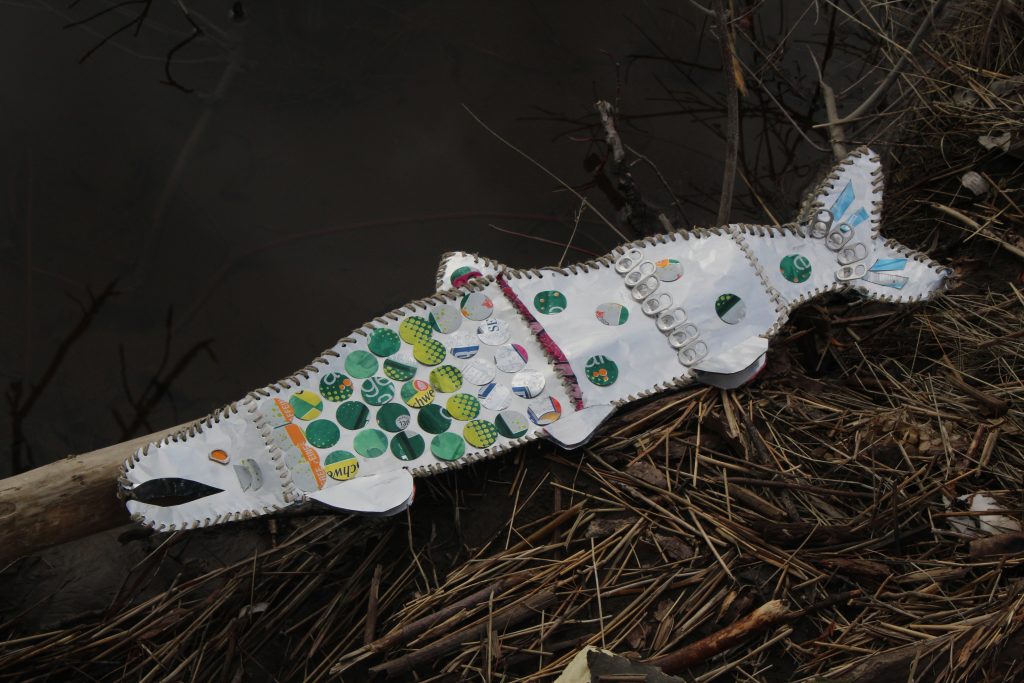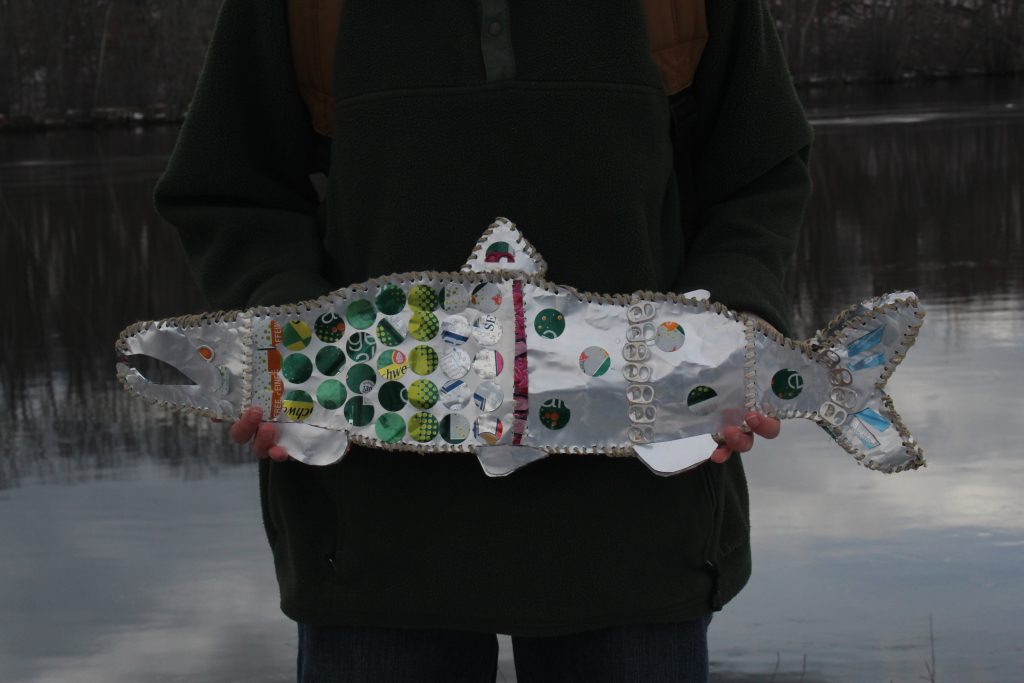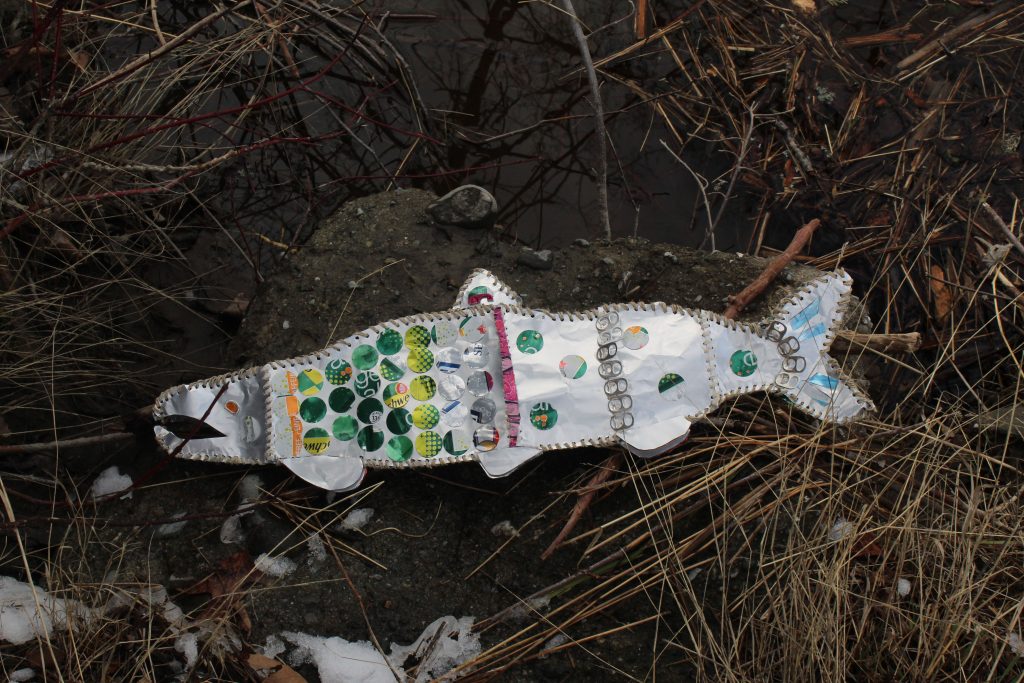Caught in the Current
By Nico Durkee
As I embarked on this artistic journey to navigate the possible narratives for this piece, I began to think about my deeper passions to represent a narrative I hold closer to me as a person. One of my passions is conservation, aligning with the mission of Spire through the means of educating our communities about environmental awareness. I aspire to help spread awareness about current events and join in on the conversation about sustainability and conservation through the visual arts. Salmon are one of the most commonly threatened group of species of fish across the nation, with overfishing, pollution and altered waterways affecting their habitat, travel, and overall health. One familiar species that is facing the effects of urbanization is the Atlantic Salmon, which are native to Maine’s oceans and streams. Due to these man-made issues, these fish struggle to reach breeding grounds and grow their populations due to dams and culverts. However, wild populations of these fish still exist in rivers and along the coast of our beloved Pine Tree State, with the help of efforts by various conservation partners to stabilize local populations and increase public awareness.
This is what pushed me to make a salmon replica out of industrial-like material. Not only is aluminum commonly seen in landfills and washed up on polluted beaches, but also resembles industrial material placed unwillingly into their habitats. Having lived near the coast of Maine almost my entire life has allowed me to see how these devastating effects on our local ecosystems, which results in the loss of species with critical environmental roles. Pollution has not only been a big issue for our local communities, but for the animals living amongst us as well. I connected this piece together with different types of twine, which represent fishing lines, and the overfishing crisis that ‘ties’ all of these issues together. Slowly but surely, I have watched as the Atlantic Salmon population fell onto the endangered species list throughout the course of living in New England. Not only does single-use materials make up the body and details of the fish itself, but it is also stuffed inside as well. Non-recyclable plastic can be seen within the body cavity, which highlights the possible irreversible effect on ecosystems, especially within our native bodies of water. This piece not only sparks discussion about conservation, but also sheds light on how much continuous environmental changes can impact various aspects of our lives.




